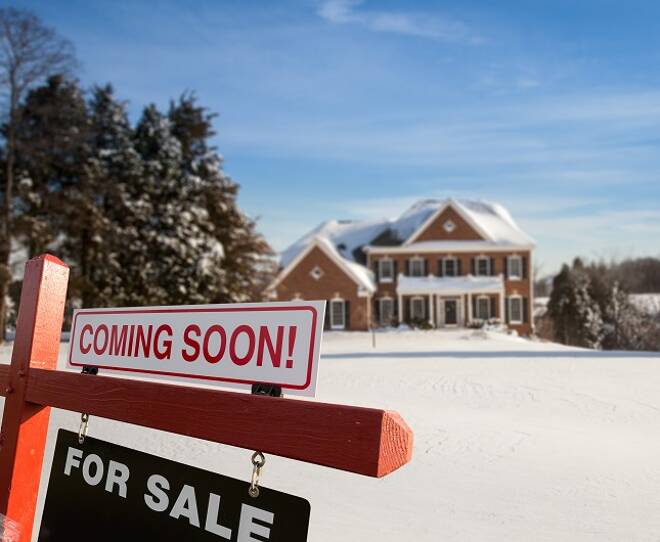Advertisement
Advertisement
U.S Mortgage Rates – Mortgage Rates Slide Again as the FED Turns Dovish
By:
Mortgage rates resumed their downward trend, with the FOMC economic projections, Iran and anticipation of the G20 Summit contributing.
Mortgage rates were back on the slide following the previous week’s 1st rise in 7-weeks. In the week ending 27th June, 30-year fixed rates fell by 11 basis points to 3.73% reversing a 2 basis point rise from the previous week. That left 30-year rates at the lowest level since late 2016 according to figures released by Freddie Mac.
Compared to this time last year, 30-year fixed rates were down by 82 basis points.
More significantly, 30-year fixed rates are down by 121 basis points since last November’s most recent peak of 4.94%.
Economic Data from the Week
Key stats out of the U.S through the 1st half of the week were on the lighter side.
Consumer confidence and durable goods orders figures provided direction on Tuesday and Wednesday.
A slide in consumer confidence and mixed durable goods orders figures supported the downward trend in mortgage rates on the week.
Outside of the numbers, market sentiment towards the G20 Summit also had an impact.
While Treasury yields were on the decline, FED Chair Powell failed to talk of a near-term rate cut on Tuesday suggesting that the FED may not be as dovish as the FOMC projections had suggested.
The G20 Summit and how talks between Trump and Xi progress will have a material influence on what lies ahead from a monetary policy perspective.
Freddie Mac Rates
The weekly average rates for new mortgages as of 27th June were quoted by Freddie Mac to be:
- 30-year fixed rates decreased by 11 basis points to 3.73% in the week. Rates were down from 4.55% from a year ago. The average fee remained unchanged at 0.5 points.
- 15-year fixed rates fell by 9 basis point to 3.16% in the week. Rates were down from 4.04% from a year ago. The average fee rose from 0.4 points to 0.5 points.
- 5-year fixed rates fell by 9 basis points to 3.39% in the week. Rates were down by 48 basis points from last year’s 3.87%. The average fee held steady at 0.4 points.
According to Freddie Mac, home purchase applications found support over the last 2-months from falling mortgage rates. Through late June, home purchase applications rose by 5 percentage points compared with the previous month. Freddie Mac anticipates that the housing market will continue to improve from both a sales and price perspective.
Mortgage Bankers’ Association Rates
For the week ending 21st June, rates were quoted to be:
- Average interest rates for 30-year fixed, backed by the FHA, decreased from 4.12% to 4.01%. Points decreased from 0.44 to 0.36 (incl. origination fee) for 80% LTV loans.
- Average interest rates for 30-year fixed with conforming loan balances decreased from 4.14% to 4.06%. Points decreased from 0.38 to 0.35 (incl. origination fee) for 80% LTV loans.
- Average 30-year rates for jumbo loan balances decreased from 4.04% to 4.00%. Points remained unchanged at 0.24 (incl. origination fee) for 80% LTV loans.
Weekly figures released by the Mortgage Bankers Association showed that the Market Composite Index, which is a measure of mortgage loan application volume, increased by 1.3% in the week ending 21st June. The increase partially reversed a 3.4% fall in the week ending 14th June.
The Refinance Index rose by 3% in the week ending 21st June. The Index fell by 4% in the previous week ending 14th June.
The share of refinance mortgage activity increased from 50.2% to 51.5%, following an increase from 49.8% to 50.2% in the week prior.
According to the MBA, market reaction to a more dovish FOMC statement and forecast weighed on Treasury yields and mortgage rates. The fall in rates led to an increase in refinancing activity, partly driven by a 9% surge in VA applications. Following the fall in the week of 21st June, mortgage rates were at the lowest level since September 2017. In spite of the fall, however, purchase applications fell by 2%, whilst up by 9% compared with a year ago.
For the week ahead
It’s a busy week ahead for the Greenback.
Key stats due out of the U.S through the 1st half of the week include private sector PMI numbers, factory orders, and trade data and ADP nonfarm employment change figures.
From the economic calendar, the ADP and ISM private-sector PMI survey figures will be the key driver.
While the stats will garner plenty of attention, market reaction to the G20 Summit will ultimately drive Treasury yields and ultimately mortgage rates.
From the previous week, the FED’s preferred inflation figures will also have an influence on yields. The core PCE Price Index rose by just 1.5% year-on-year, falling well short of the FED’s 2% target.
About the Author
Bob Masonauthor
With over 28 years of experience in the financial industry, Bob has worked with various global rating agencies and multinational banks. Currently he is covering currencies, commodities, alternative asset classes and global equities, focusing mostly on European and Asian markets.
Advertisement
